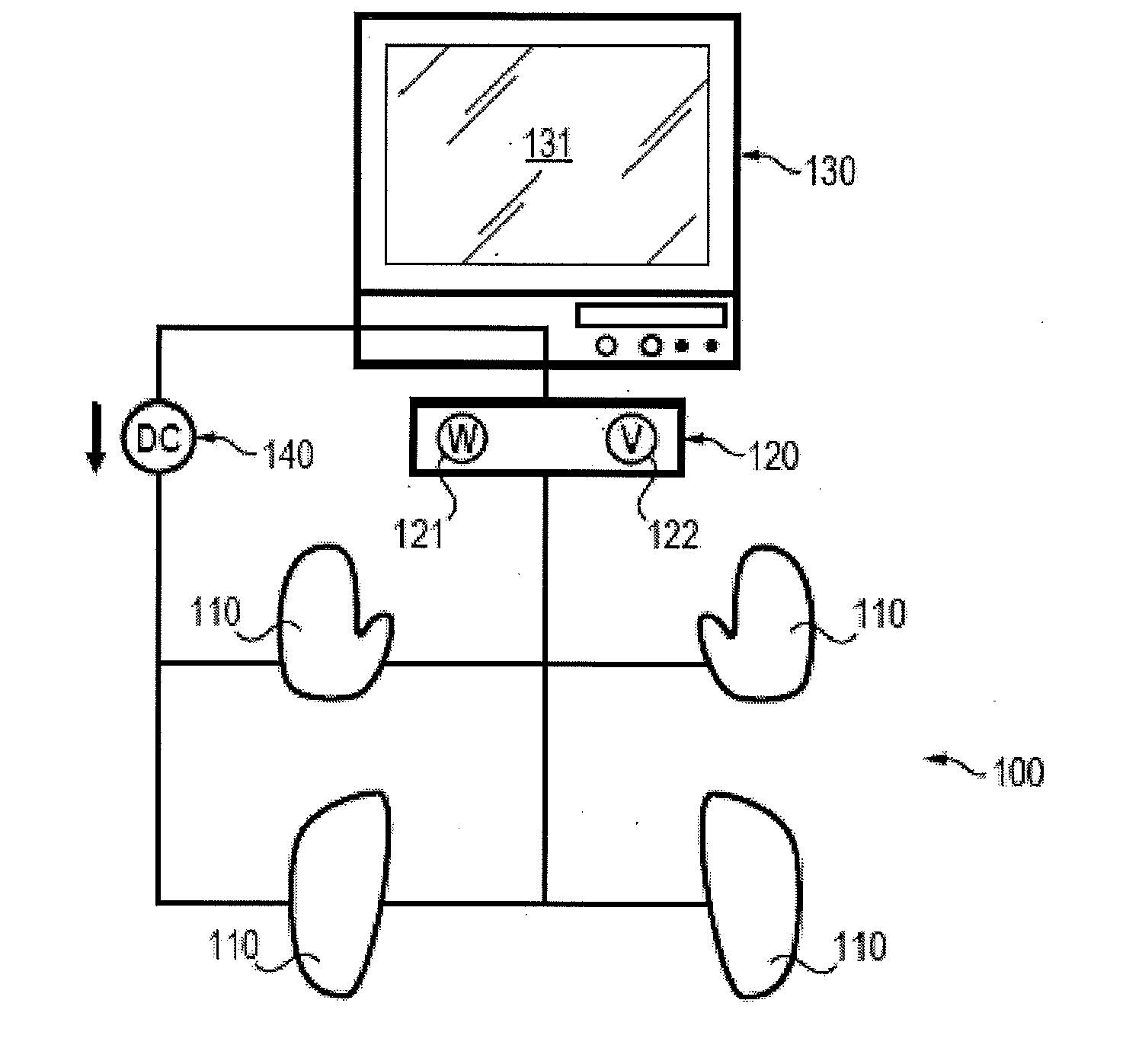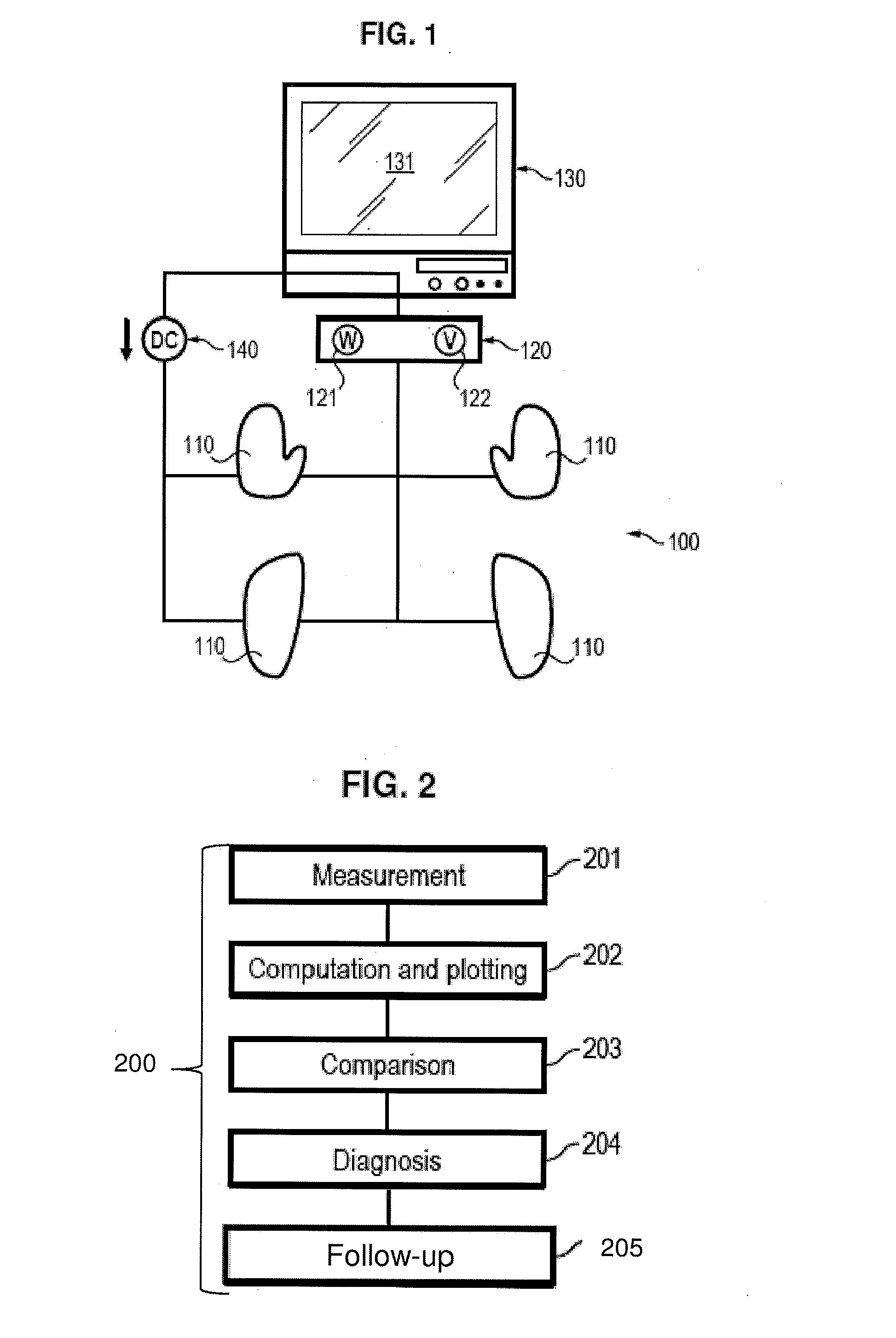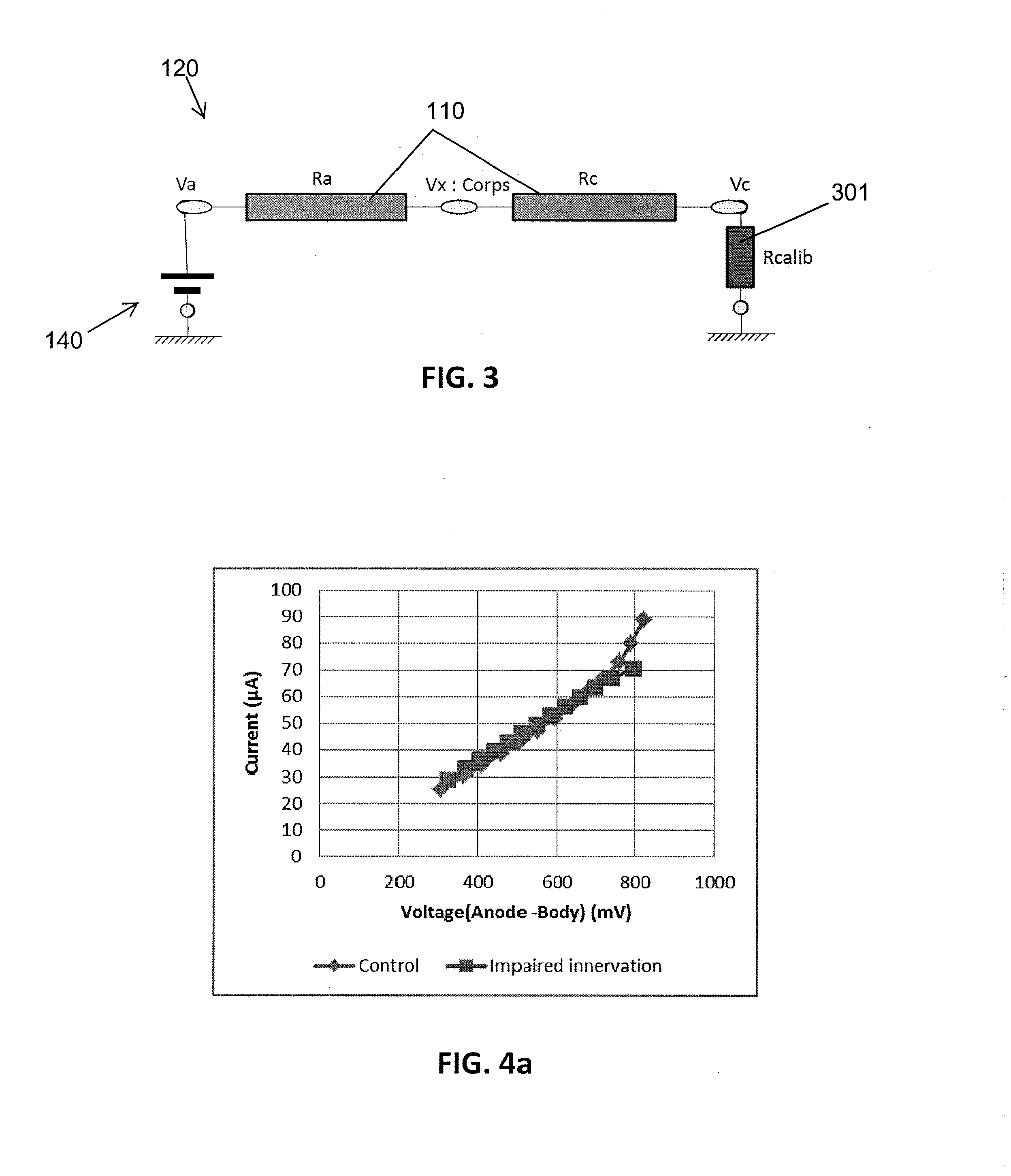Assessment of relative proportions of adrenergic and cholinergic nervous receptors with non-invasive tests
a technology of cholinergic and adrenergic nervous receptors, applied in the direction of neuromediator receptors, animal/human proteins, sensors, etc., can solve the problems of cumbersome and patient-intensive invasive measurement of cholinergic or adrenergic nervous detector density
- Summary
- Abstract
- Description
- Claims
- Application Information
AI Technical Summary
Benefits of technology
Problems solved by technology
Method used
Image
Examples
Embodiment Construction
[0022]A variation in the density of adrenergic or cholinergic nervous receptors, resulting in a variation of the relative proportions of these two kinds of receptors, results in an altered response of eccrine sweat glands to electric stimulation as illustrated by measurement performed in patients with known CFTR dysfunction as compared to controls.
[0023]More particularly, the electrochemical skin conductance of patients varies according to the relative proportions of adrenergic and cholinergic receptors.
[0024]This is a basis of the invention, which measures the electrochemical skin conductance (ESC) of a patient after application of a low direct voltage via stainlees-steel or nickel electrodes, and, based on a ratio between values of the electrochemical skin conductance at low and high voltages, infers the relative proportions of adrenergic and cholinergic nervous receptors.
[0025]Typical skin responses are shown in FIGS. 4A and 4B for healthy subjects. Above some voltage threshold, ...
PUM
 Login to View More
Login to View More Abstract
Description
Claims
Application Information
 Login to View More
Login to View More - R&D
- Intellectual Property
- Life Sciences
- Materials
- Tech Scout
- Unparalleled Data Quality
- Higher Quality Content
- 60% Fewer Hallucinations
Browse by: Latest US Patents, China's latest patents, Technical Efficacy Thesaurus, Application Domain, Technology Topic, Popular Technical Reports.
© 2025 PatSnap. All rights reserved.Legal|Privacy policy|Modern Slavery Act Transparency Statement|Sitemap|About US| Contact US: help@patsnap.com



